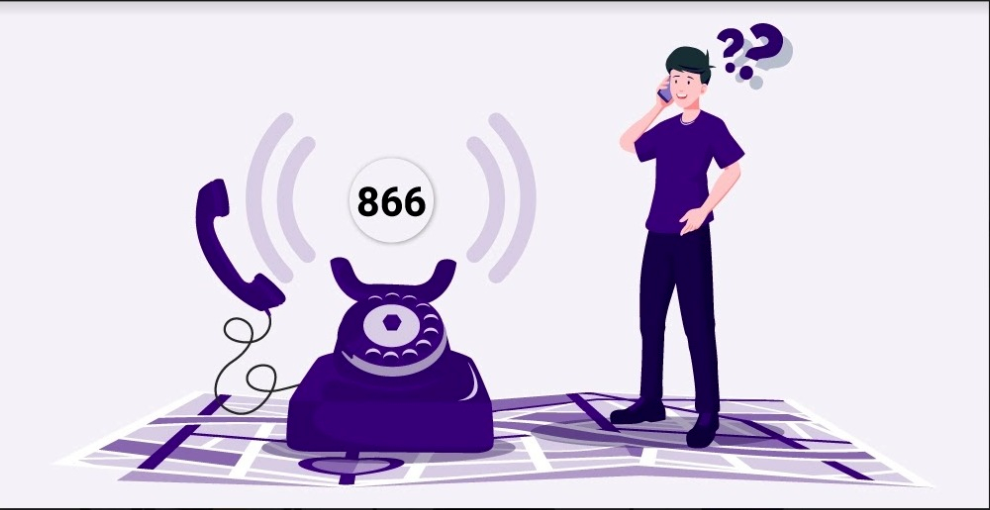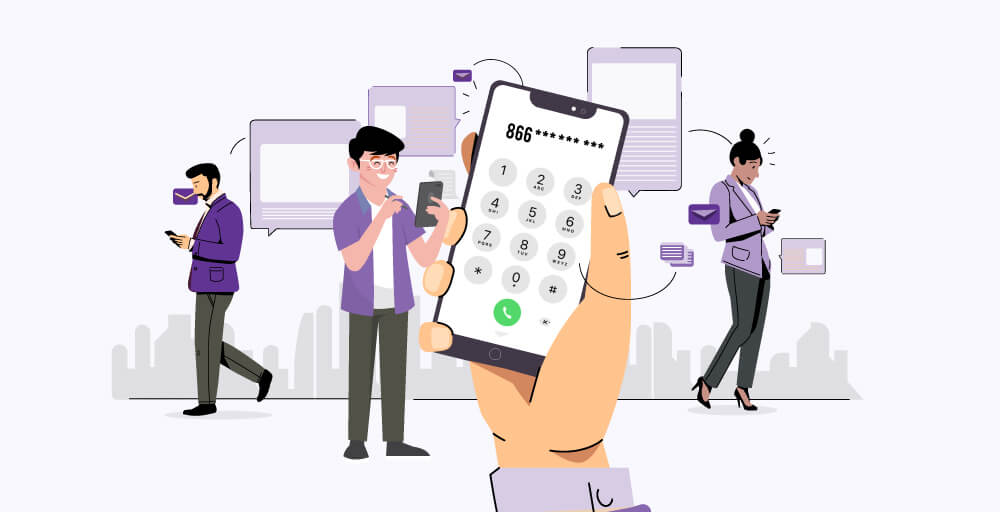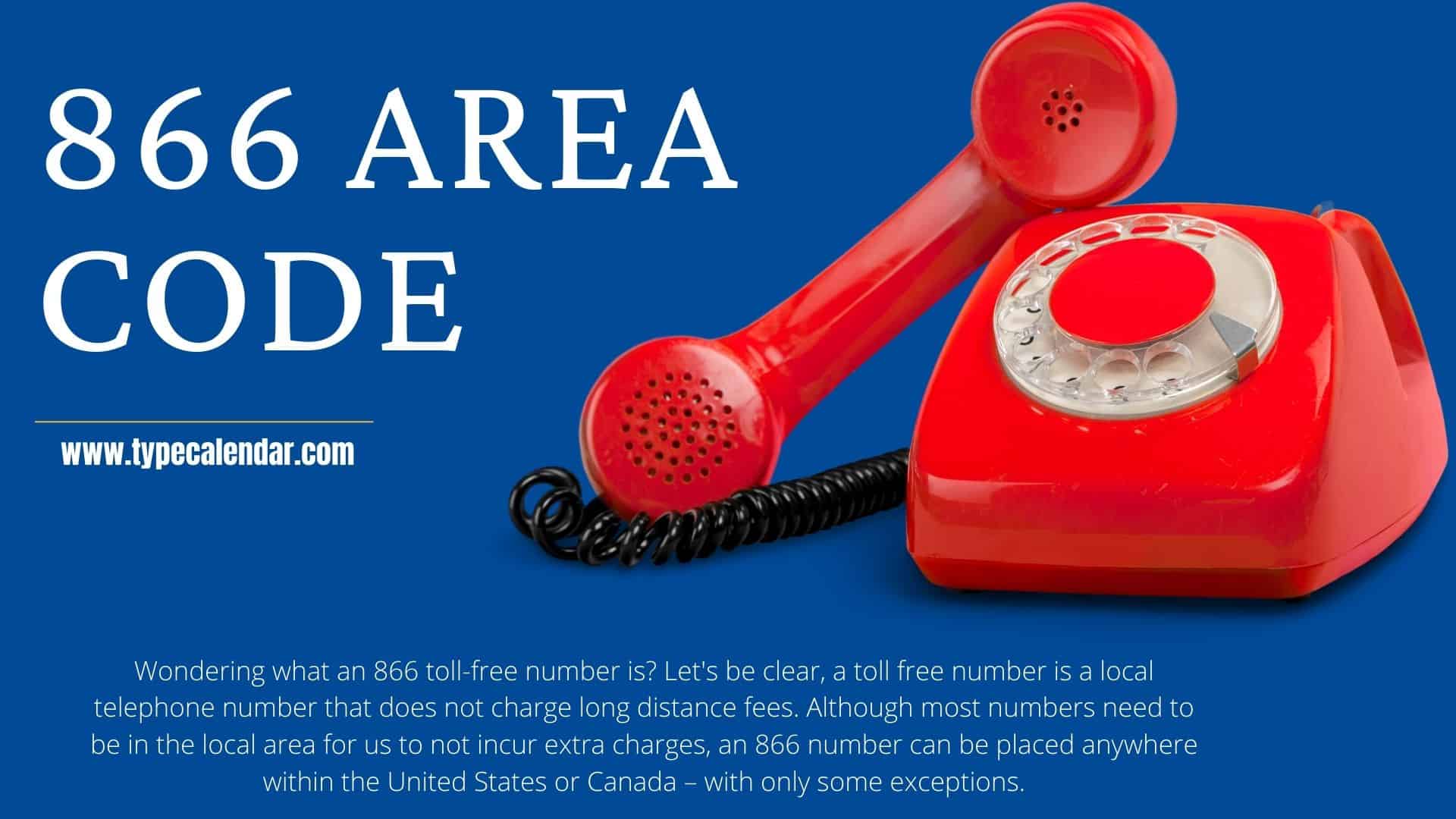The area code 866 is not tied to a specific geographic location in the United States. It is a toll-free area code that can be used from anywhere in the country. Toll-free numbers, including those with the 866 prefix, are not tied to a particular region and can be dialed without incurring any long-distance charges.
Introduction to Area Code 866
Area Code 866 is a toll-free area code used in the United States. Toll-free numbers allow callers to reach businesses or individuals without incurring any long-distance charges.
The purpose of toll-free numbers, including those with the 866 prefix, is to provide a convenient and cost-free way for customers or clients to contact organizations. These numbers are typically used by businesses, government agencies, and non-profit organizations that wish to offer a free means of communication to their customers or stakeholders.
When dialing an area code 866 number, callers are not charged for the call, regardless of their location within the United States. This means that individuals from any state can dial an 866 number without incurring any long-distance fees.
The Importance of Area Codes in the United States

- Geographical Identification: Area codes help identify specific geographic regions within the United States. Each area code corresponds to a particular location or region, allowing callers to determine the general area where a phone number is registered.
- Call Routing: Area codes play a crucial role in call routing. When you dial a phone number, the area code helps direct the call to the appropriate destination based on the designated region. This ensures that calls are efficiently connected to the intended recipients.
- Local Number Availability: Area codes help manage the availability of local phone numbers. As populations and telephone usage grow, new area codes are introduced to provide additional phone numbers for a specific region. This helps maintain an adequate supply of phone numbers to meet the increasing demand.
- Long-Distance Calling: Area codes also assist in determining long-distance calls. By recognizing the area code of a dialed number, callers can determine whether the call will be considered local or long-distance, affecting call charges and billing.
- Business and Marketing: Area codes are often used strategically by businesses for marketing and advertising purposes. Companies can choose phone numbers with specific area codes to create a local presence in different regions, making it easier for customers to identify and connect with local businesses.
- Toll-Free Numbers: Toll-free numbers, identified by area codes like 800, 888, 877, and 866, allow callers to reach businesses and organizations without incurring any long-distance charges. These numbers provide a convenient means of communication and are widely used by businesses to offer free customer support or sales lines.
- Number Portability: Area codes enable number portability, which allows individuals and businesses to retain their phone numbers when changing service providers or moving to a different geographic location. This ensures continuity of contact information and avoids disruptions in communication.
- Emergency Services: Area codes are crucial for emergency services, such as 911. When someone dials 911, the area code helps route the call to the appropriate emergency response center based on the caller’s location, ensuring prompt and accurate assistance during emergencies.
- Planning and Administration: Area codes are managed and regulated by national and state telecommunications authorities. These authorities allocate, distribute, and maintain area codes to ensure efficient and organized telephone systems across the country.
- Caller Identification: Area codes can provide some information about the caller’s location. When receiving a call, seeing the area code on caller ID can help individuals determine the general region from which the call originates, providing context before answering or returning the call.
Different Types of Area Codes in the USA
In the United States, there are several types of area codes used to designate different types of phone numbers. Here are some of the common types:
- Geographic Area Codes: These area codes are associated with specific geographical regions within the United States. They are used to identify phone numbers tied to particular cities, counties, or states. Examples include area codes like 212 (New York City), 310 (Los Angeles), and 786 (Miami).
- Overlay Area Codes: An overlay area code is introduced when the existing phone numbers in a particular region have been exhausted, and additional phone numbers are needed. Instead of splitting the existing area code into multiple codes, an overlay code is added to the same geographic area. Callers must dial the area code along with the seven-digit number. For instance, the overlay area code 669 was added to the same region as the 408 area code in California.
- Non-Geographic Area Codes: These area codes are not tied to a specific geographic location and are often used for special purposes. Examples include toll-free area codes like 800, 888, 877, and 866, which allow callers to reach businesses and organizations without incurring long-distance charges. Other non-geographic codes include area codes for personal communication services (e.g., 500), pagers (e.g., 888), and voicemail (e.g., 900).
- Mobile Area Codes: Mobile area codes are used to identify phone numbers associated with mobile or cellular services. These codes are typically not tied to a specific geographic area but are assigned to mobile service providers. Common examples include area codes like 202 (T-Mobile), 310 (Verizon Wireless), and 415 (AT&T Mobility).
- Special Purpose Area Codes: Special purpose area codes are used for specific services or applications. For example, area code 711 is designated for Telecommunications Relay Services (TRS), which enables individuals with hearing or speech disabilities to communicate with others through a relay operator. Area code 211 is reserved for community information and referral services.
- Reserved and Unassigned Area Codes: Some area codes are reserved for future use or have been left unassigned. These codes are held in reserve by telecommunications authorities and may be introduced when needed due to increasing demand for phone numbers.
Unique Features of Area Code 866

Area Code 866, being a toll-free area code in the United States, has some unique features that distinguish it from other area codes. Here are a few notable characteristics:
- Toll-Free Calling: The primary feature of Area Code 866 is that it enables toll-free calling. When you dial a phone number with the 866 prefix, you can make the call without incurring any long-distance charges, regardless of your location within the United States. This makes it convenient for customers or individuals to reach businesses and organizations without worrying about call costs.
- National Reach: Unlike geographical area codes that are tied to specific regions, Area Code 866 has a national reach. It can be dialed from any location within the United States. This means that businesses or organizations using an 866 number can cater to customers or clients across the country without any geographical limitations.
- Branding and Customer Service: Many businesses choose to adopt toll-free numbers with the 866 prefix as part of their branding and customer service strategy. Having a toll-free number gives a professional image to the organization, and it signifies that the business is customer-oriented and committed to providing free communication channels.
- Portability: Area Code 866, like other toll-free area codes, offers number portability. This means that businesses or individuals can retain their 866 number even if they switch service providers or relocate to a different geographic area. Portability ensures continuity and convenience for customers who may have already saved the toll-free number for future contact.
- Easy Recall: Toll-free numbers with the 866 prefix are generally easy to remember. The repetitive pattern of “8-6” followed by any number combination can make it more memorable for callers. This can be advantageous for businesses seeking to create a lasting impression and encourage customers to reach out.
- Customer-Friendly Communication: Area Code 866 is widely associated with customer support, sales hotlines, and helplines. Many businesses and organizations utilize toll-free numbers to offer free and accessible communication channels to their customers. This helps in enhancing customer satisfaction, improving engagement, and building stronger relationships with the clientele.
Coverage and Geographic Regions of Area Code 866
Area Code 866 is a toll-free area code used throughout the United States. As a toll-free code, it does not have a specific geographic region associated with it. Instead, it allows callers to reach businesses and organizations from anywhere in the country without incurring any long-distance charges.
Since Area Code 866 is not tied to a particular location, it provides national coverage. This means that individuals from all states within the United States can dial numbers with the 866 prefix without any restrictions. Whether you are in California, New York, Texas, or any other state, you can use Area Code 866 to reach toll-free numbers and connect with businesses or organizations across the country.
Conclusion
In conclusion, Area Code 866 is a toll-free area code in the United States that allows callers to reach businesses and organizations without incurring any long-distance charges. It is not associated with a specific geographic region and provides national coverage, enabling individuals from all states to dial numbers with the 866 prefix. Area Code 866 serves as a convenient and cost-free means of communication, facilitating customer support, sales, and other services.
References:

